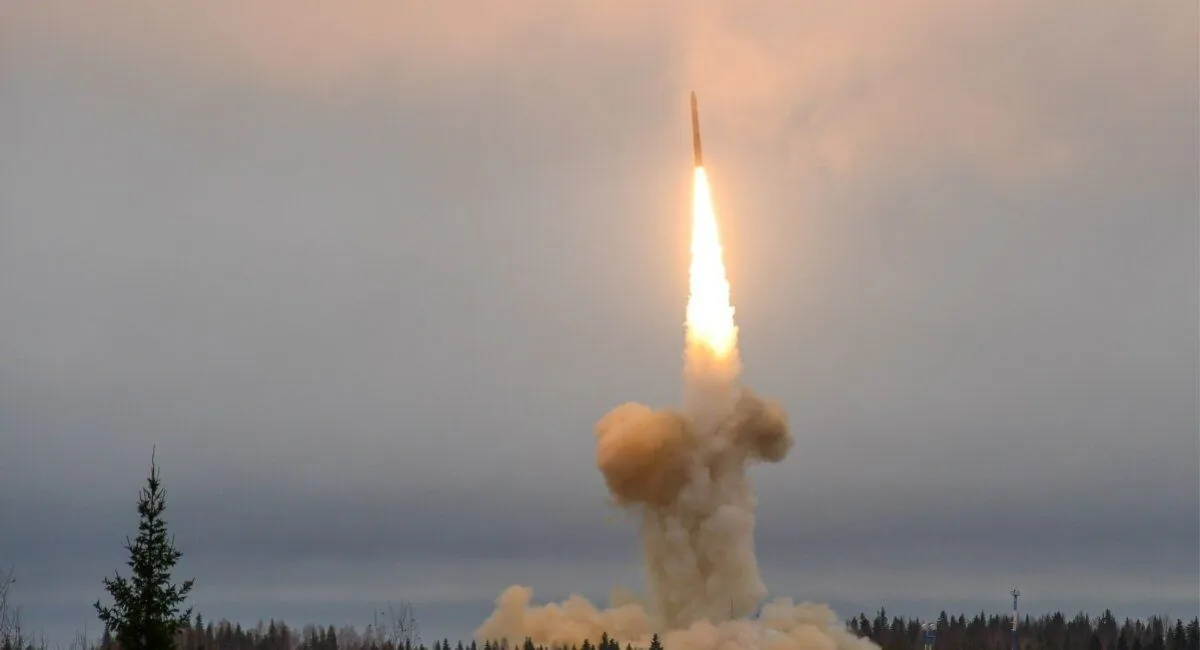“Russia still launched the “Rubezh” ICBM over Ukraine?: Defense Express stated that it demonstrated the possibility of a nuclear attack. Russia launched an ICBM from the Astrakhan region along with other missiles during the attack on November 21. Experts consider this a demonstration of the possibility of a nuclear strike.”, — write on: unn.ua
Details
According to the summary of the command of the Air Force of the Armed Forces of Ukraine, on the morning of November 21, Russia launched a combined attack, using seven Kh-101 cruise missiles that were launched from the Tu-95MS, of which six were shot down, as well as one Kh-47M2 “Dagger” from the MiG- 31.
In addition, an intercontinental ballistic missile was launched from the Astrakhan region of the Russian Federation. Its specific type is not indicated. However, the day before, the mass media spread information about the threat of the enemy using the RS-26 medium-range ballistic missile “Boundary”.
Defense Express noted that only 6 out of 7 cruise missiles were reported to have been shot down, but indicated that “there were no significant consequences for the other missiles.”
Given that the RS-26 “Rubezh”, and even more so intercontinental ballistic missiles (for example, “Topol” or “Yars”), are designed to deliver weapons of mass destruction, this only means that the Russian Federation has demonstrated the possibility of a nuclear strike
Against this background, there remain questions to which the report of the Air Force Command does not provide answers. In particular, where exactly did the Russian army aim its ballistic missile, and what equipment did it have.
As explained, the point is that putting a conventional high-explosive warhead on the conventional “Rubezh”, “Topol” or “Yars” is possible in deep theory, but does not make practical sense due to the huge cost of such missiles. Especially in conditions when most of the targets in Ukraine are within range of the Russian Iskander OTRK and other means of destruction.
Putin approved the new nuclear doctrine of the Russian Federation: what has changed November 19 2024, 08:43 • 12866 views
Defense Express also adds that the absolute majority of Russian long-range missiles can be nuclear-equipped. Including “Iskander”, “Dagger”, cruise missiles of the Kh-55 and Kh-102 types, as well as many others. Therefore, there are questions about the meaning of using a missile of medium or even intercontinental range against Ukraine, even for the task of a nuclear strike.
And the enemy was already using Kh-55 cruise missiles with massive models of nuclear charges. That is, it is quite possible that the launched Russian ballistic missile was equipped with warhead simulators, according to Defense Express.
It is also questionable whether the United States was warned about the launch and its direction, because the announcement of such launches is a mandatory condition for preventing the activation of the missile attack warning system and the launch of missiles in response in the scenario of a counter nuclear strike, experts emphasized.
Zelenskyi on the renewed nuclear doctrine of the Russian Federation: “Putin shows the world that he wants to destroy Ukraine and other countries”November 19 2024, 17:42 • 22833 views
We will remind
the Russians are constantly trying to modify and modernize all the types of missiles and drones they have, which they use for attacks on Ukraine. KNDISE specialists in the comments UNN told what specific features are in question and what role western components play in changes to enemy weapons. The enemy uses not only Western components. According to Oleksandr Ruvin, director of the Kyiv Scientific Research Institute of Forensic Examinations, about 50 Chinese manufacturers supply components for UAVs, which the enemy is using to attack Ukraine.
In addition, the KNDISE experts established that the Russian X-69 missiles, which the occupiers use to attack Ukraine, are made of several types of weapons and have foreign components.
